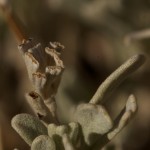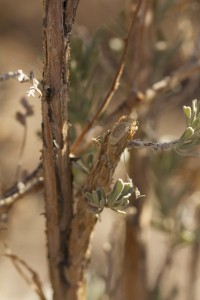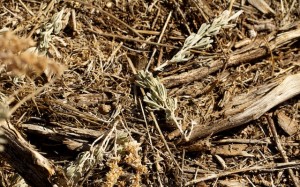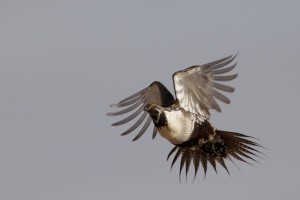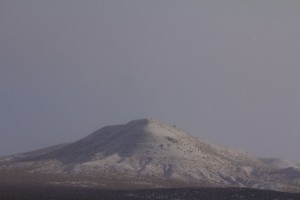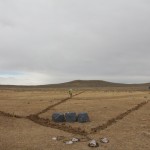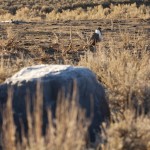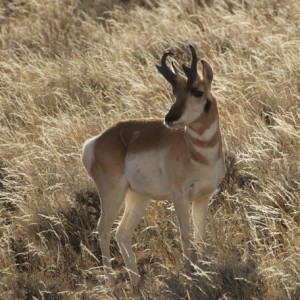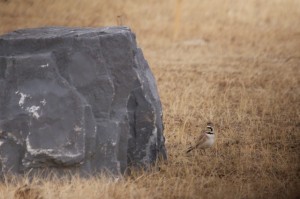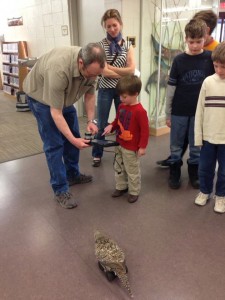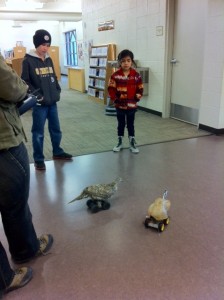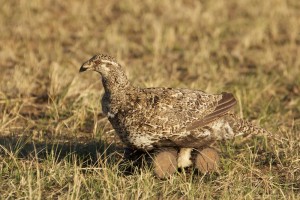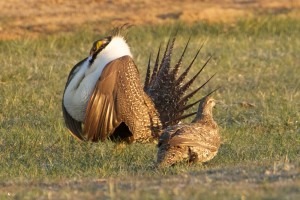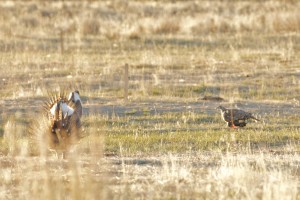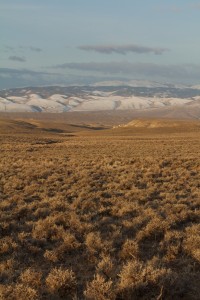
Monument Draw, between our camp and one of our leks. Sagebrush is definitely the dominant plant out here!
Our focus in our Sage-Grouse research has been fairly limited to the lek– this is still keeping us busy even after many years of study! However, it’s always nice to get a more comprehensive view of the ecology of whatever organism you are studying, and towards that end, we have initiated a collaboration with Dr. Jennifer Forbey from Boise State University. For the Sage-Grouse, their life revolves around the sage plants (genus Artemesia) that form most of their diet, especially in the fall and winter. Jen spent a few days with us a the end of March to see our site, tell us about her research on the interaction between sage and the animals that depend on it, and plan out the first steps in our research together.
What at first seems like a uniform world of “sage” out here turns out to be a variable landscape of food quality for the grouse. First of all there are different species of Artemesia. In our site we have at least two, the basin big sage and Wyoming big sage. These are usually pretty distinguishable, although sometimes smaller Basin plants can look like larger Wyoming plants. The leaves are usually pretty different though, as Jen demonstrated. Jen gave us a handy rule of thumb for this: you can remember the Wyoming sage is like a Wyoming native giving the middle finger to the Californians! We got a laugh out of that.
Jen showed us how to distinguish foraging by different herbivores in the area. The grouse tend to pick just the leaves, so if you have a sharp eye you can find the remaining leaf base. Old foraging will show a brown scar in the middle of the leaf, but if you happen to find a place where they have been foraging during the past day or two it will be bright green. Rabbits, on the other hand, tend to cut the entire stem off in a neat angled cut. They harvest the leafy parts before the sage can mount an defense (see below).
The sage are full of all sorts of secondary chemicals such as phenols and terpenes, making them pretty unpalatable to most animals. Jen had us taste a leaf and those little things pack a punch, leaving a persistent bitter taste in our mouths.
The Sage-Grouse obviously have a way around this since they eat almost nothing but sage for months out of the year. One adaptation is a specialized gut with two large caeca (blind pouches coming off the intestine). These are places where bacteria can work their magic and help detoxify and digest the sage. On the lek you’ll often find a dark, gooey tar-like caecal casts left by the grouse, which look very different from their normal (goose-like) poop. I can’t believe I don’t have a photo at hand to show this!
It gets more interesting when you look at variation among plants of a species. While the Sage-Grouse can eat the sage, Jen’s work has shown they prefer to feed off of plants that have less of these secondary chemical compounds. Eating bad quality sage with too high a concentration of these means the grouse have to work harder at digesting for fewer nutrient rewards.
The sage plants themselves are not passive players in this. When something starts to damage the leaves of a sage plant, it will begin to produce more of these defensive chemicals. Even more impressive- as the volatile compounds reach the air, they can spread to nearby plants, causing neighboring bushes to ramp up their production of chemicals as well. What this means is that the longer Sage-Grouse spend foraging in a given patch of sage, the lower quality the food becomes.
This chemical response by the sage may solve a mystery stemming from a 1980’s study of sage-grouse behavior from the Mono Basin in California. Sandy Vehrencamp and colleagues followed radio-tagged males and found that the “good” males (with high energy reserves) were actually traveling farther from the lek, while the males with poor reserves foraged close to the lek. It could be that the plants near the lek tend to build up more of these secondary compounds, so males that can travel farther may actually encounter better areas in which to feed. We hope to follow up on this possibility as we learn more about the way that off-lek foraging behavior interacts with on-lek courtship and performance.

